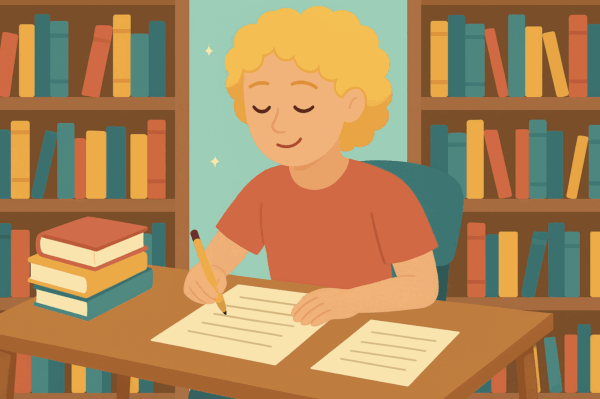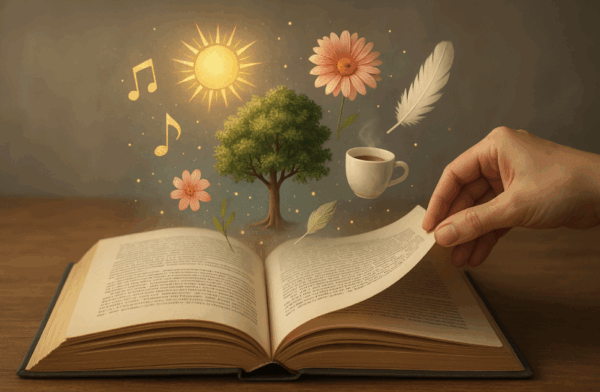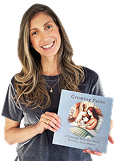Stories have been at the heart of human connection for centuries, evolving from ancient myths and oral traditions to modern literature and digital storytelling. No matter the format, storytelling remains a powerful way to share knowledge, inspire emotions, and shape culture. From folklore to bestselling novels, every story has the ability to transport, teach, and transform its audience.
But how many types of stories exist, and what makes some narratives more compelling than others? British author Christopher Booker explored this in The Seven Basic Plots, identifying fundamental storytelling structures that appear across cultures and time periods. Understanding these different types of stories in literature helps explain why some narratives become timeless while others fade. Research from the Harvard Business Review suggests that stories activate key areas of the brain, making them more memorable and emotionally impactful than facts alone.
In this guide, we’ll explore the most common types of stories, their role in literature and media, and why they continue to resonate with audiences. Whether you’re a writer, a reader, or just someone fascinated by the power of storytelling, this breakdown will help you understand how narratives shape our world.

The Seven Basic Plots: The Foundation of Storytelling in Literature
Why do some stories captivate us while others fall flat? British author Christopher Booker believed he had the answer. In his influential work The Seven Basic Plots: Why We Tell Stories, Booker argued that every story ever told can be boiled down to seven core plot types. These basic story types tap into universal human experiences, making them timeless and endlessly adaptable. Let’s break down each plot type and explore how they continue to shape the stories we love.
- Overcoming the Monster – A hero faces a formidable enemy, often against overwhelming odds. This “monster” can be literal or symbolic. Harry Potter and the Sorcerer’s Stone pits Harry against Voldemort, while Jaws turns a great white shark into pure nightmare fuel.
- Rags to Riches – A protagonist rises from humble beginnings to achieve greatness. Think of Cinderella transforming from servant to princess or Slumdog Millionaire, where Jamal’s life changes drastically through sheer resilience and fate.
- The Quest – A journey with a clear goal, often filled with danger and challenges. Indiana Jones searches for ancient relics, and Frodo’s trek in The Lord of the Rings is the ultimate quest voyage.
- Voyage and Return – A character ventures into a strange world and must return home wiser. Alice tumbles into Wonderland, and Arthur Dent gets whisked through the cosmos in The Hitchhiker’s Guide to the Galaxy.
- Comedy – Not just about laughs, but stories driven by confusion, misunderstandings, and a happy resolution. Shakespeare’s Much Ado About Nothing and the extravagant Crazy Rich Asians fit perfectly here.
- Tragedy – A main character’s fatal flaw leads to their downfall. Shakespeare’s Hamlet is a classic example, while Katniss’s choices in The Hunger Games bring both victory and devastating loss—a modern take on a tragic story.
- Rebirth – A character undergoes a profound transformation. In A Christmas Carol, Scrooge becomes compassionate, and in Groundhog Day, Phil Connors learns to live fully through endless repetition.
These seven basic plots offer a blueprint for nearly every story ever told. Whether it’s a monster to defeat, a quest to complete, or personal growth to achieve, these plot and main story types remain the foundation of storytelling across cultures and generations.
Beyond the Basics: Popular Story Types Across Genres
While the seven basic plots provide the foundation for most narratives, most stories come to life through diverse genres that offer unique experiences and emotional depth. From pulse-pounding adventures to heart-wrenching love stories, these popular story types captivate readers by exploring different facets of the human experience.
Adventure Stories –
Packed with high-stakes action and daring exploits, adventure stories thrust characters into dangerous and thrilling situations. Whether it’s Indiana Jones dodging booby traps in Raiders of the Lost Ark or the hero Percy Jackson battling mythological monsters, these tales keep readers on the edge of their seats.
Love Stories –
Love stories dive deep into emotional journeys, exploring the joys and heartbreaks of relationships. From the slow-burn romance of Pride and Prejudice to the tear-jerking passion of The Notebook, these stories remind us of love’s power to heal and devastate.
Science Fiction & Fantasy –
These genres stretch the imagination, building entire worlds beyond our own. In Harry Potter, magic and friendship collide at Hogwarts, while Dune transports readers to a harsh desert planet full of political intrigue, romance, and survival.
Historical Fiction –
Blending fact with fiction, historical stories bring events of the past to life. The Book Thief offers a child’s perspective during Nazi Germany, and Wolf Hall unpacks the political machinations of Tudor England.
Horror –
Designed to confront our deepest fears, horror stories push characters—and readers—into terrifying scenarios. Stephen King’s It brings childhood nightmares to life, while The Shining traps its characters in psychological horror.
Memoirs & Biographies –
Real-life stories provide raw and inspiring glimpses into someone’s life. In Eat, Pray, Love, Elizabeth Gilbert embarks on a global journey of self-discovery, proving that real people can live stories as compelling as the protagonist of any fiction.
These story types transcend time and genre, offering readers endless ways to explore new worlds, emotions, and perspectives.
Short Stories: The Art of Telling More with Less
Short stories prove that you don’t need thousands of words to tell a good story. In fact, the best short stories often leave a deeper impact than full-length novels by distilling powerful ideas into compact, unforgettable narratives. With every word carrying weight, short stories master the art of writing with brevity and emotional punch.
Take Shirley Jackson’s The Lottery, for a classic example—a chilling exploration of tradition and conformity that shocks readers in just a few pages. Or Ernest Hemingway’s Hills Like White Elephants, where sparse dialogue and subtext reveal the complexity of a couple’s strained relationship. These classics show how short stories can tackle heavy themes with precision and subtlety.
What makes a short story compelling? It’s all about focus. A strong short story zeroes in on a single moment, character, or idea and explores it deeply without unnecessary detail. Every sentence should serve the story, whether it’s building atmosphere, advancing the plot, or revealing character.
Tips for Writing a Great Short Story:
- Start with a strong hook. Capture the reader’s attention from the first line.
- Focus on one idea or moment. Don’t try to cram in too much.
- Use vivid, concise language. Make every word count.
- Leave room for interpretation. Sometimes what’s unsaid is just as powerful.
In the world of storytelling, short stories are proof that sometimes less truly is more.
Your Publishing Journey Awaits – Start NowCrafting a Great Story: The Key Ingredients
Every great story, no matter the genre, shares a few essential ingredients that keep readers hooked from beginning to end. Crafting a compelling narrative is about more than just plot twists—it’s about creating characters and worlds that feel real and stakes that truly matter.
Character Development:
- At the heart of every good story is a relatable protagonist. Readers need someone to root for, flaws and all. Katniss Everdeen’s fierce independence and vulnerability make her a powerful lead in The Hunger Games, while Harry Potter’s journey from an ordinary boy to a hero draws readers into his world. Strong character development means giving your main character goals, fears, and growth—making them feel like real people.
Conflict and Resolution:
- No story works without conflict. Whether it’s a fight against an external villain or an internal struggle, every narrative needs stakes. Conflict drives the plot forward and keeps readers engaged. However, resolution is just as important—how the conflict is resolved shapes the story’s emotional impact and gives readers closure.
World-Building:
- Immersive settings make stories unforgettable. J.R.R. Tolkien’s Middle-earth and J.K. Rowling’s Hogwarts aren’t just backdrops—they’re living, breathing worlds that shape the characters and plot. Thoughtful world-building invites readers into unique narrative experiences they won’t want to leave.
Emotional Content:
- Stories resonate when they tap into real emotions. Joy, fear, love, loss—these feelings bridge the gap between fiction and reality. Emotional depth makes stories memorable, allowing readers to connect on a personal level.
Balancing Originality with Universal Themes:
- The best stories blend fresh ideas with timeless themes like love, loss, and personal growth. Striking this balance creates narratives that feel both original and universally relatable.
By weaving together compelling characters, meaningful conflict, rich worlds, and emotional content, writers can create stories that captivate and inspire.
Unique Narrative Experiences: Breaking the Mold
Not all stories follow a straight path—and that’s where some of the most unforgettable narratives are born. Writers have always pushed boundaries, exploring unique ways to tell stories that challenge, surprise, and deeply engage audiences. By breaking traditional molds, storytellers create experiences that feel fresh and unforgettable.
Non-linear storytelling twists the traditional timeline, revealing events nonconsecutively to build suspense or deepen meaning. Memento unravels its plot in reverse, forcing viewers to piece together the story like a puzzle, while Pulp Fiction jumps between timelines, creating an electric and unpredictable narrative flow.
Multiple Perspectives offers a richer, more complex story by showing events through different eyes. Gone Girl keeps readers guessing by switching between Nick and Amy’s conflicting accounts, while William Faulkner’s The Sound and the Fury uses varying viewpoints to explore family and loss.
Interactive and Multimedia Storytelling has opened up new frontiers. Video games like The Last of Us let players become the characters, making decisions that impact the story. Podcasts like Welcome to Night Vale blend audio storytelling with eerie world-building, offering immersive, unique narrative experiences.
For writers, innovation doesn’t mean abandoning structure—it means bending it. By exploring different story types and creating unique ways to engage audiences, writers can breathe new life into even the most classic frameworks.
Why Stories Will Always Matter
Stories are more than just entertainment—they are the threads that connect us, teach us, and inspire us. From ancient myths to modern-day blockbusters, storytelling shapes how we understand the world and each other. Whether it’s the thrill of an adventure, the heartbreak of a tragedy, or the wonder of a fantasy realm, every story has the power to leave a lasting mark on someone’s life.
As author Philip Pullman once said, “After nourishment, shelter, and companionship, stories are the thing we need most in the world.” Stories fuel our imagination, challenge our perspectives, and spark inspiration in ways few other things can.
Now it’s your turn. Explore the different types of stories that resonate with you—or better yet, start creating many stories of your own. Every great point of inspiration begins with a single idea, and who knows where your story could lead?
Ready to craft unforgettable narratives? Spines is here to help you turn ideas into stories that captivate and inspire. Start your storytelling journey today!
FAQs – Types of Stories
Q: What are the 7 types of stories?
The seven basic story types, as identified by Christopher Booker in The Seven Basic Plots, are:
- Overcoming the Monster – A hero battles an antagonist (e.g., Dracula).
- Rags to Riches – A protagonist rises from humble beginnings (e.g., Cinderella).
- The Quest – A journey to achieve a goal (e.g., The Lord of the Rings).
- Voyage and Return – A character explores a new world and returns changed (e.g., Alice in Wonderland).
- Comedy – A lighthearted story with misunderstandings and happy resolutions (e.g., A Midsummer Night’s Dream).
- Tragedy – A downfall of the protagonist due to a flaw (e.g., Macbeth).
- Rebirth – A character undergoes a transformation (e.g., A Christmas Carol).
Q: What are the 4 types of storytelling?
Storytelling is often categorized into four main types:
- Oral Storytelling – Passed down through spoken word, myths, and legends.
- Written Storytelling – Found in books, articles, and manuscripts.
- Visual Storytelling – Told through movies, comics, and paintings.
- Digital Storytelling – Present in podcasts, blogs, and social media content.
Q: What are the 3 types of stories?
Stories generally fall into three broad categories:
- Character-driven stories – Focused on personal growth and relationships (e.g., To Kill a Mockingbird).
- Plot-driven stories – Based on events, action, or suspense (e.g., The Da Vinci Code).
- Theme-driven stories – Built around a central message or moral (e.g., Animal Farm).
Q: What are the most common short story types?
The most popular short story formats include:
- Flash Fiction – Ultra-short, typically under 1,000 words.
- Fable – A moral-driven tale, often featuring animals (e.g., The Tortoise and the Hare).
- Folktale – Stories passed down through generations (e.g., The Brothers Grimm fairy tales).
- Parable – A short story teaching a spiritual or moral lesson (e.g., The Parables of Jesus).
Q: How many story archetypes are there?
There are 12 universal story archetypes, including:
- The Hero’s Journey – A protagonist embarks on an adventure.
- The Underdog – A character fights against the odds.
- The Coming of Age – A journey of self-discovery.
- The Revenge Story – A protagonist seeks justice.
- The Love Story – A tale of romance and relationships.
Q: What is the difference between a folktale and a short story?
A folktale is a traditional story passed down through generations, often with mythical elements, while a short story is a modern narrative, usually fictional, written by a single author with a defined structure and resolution.
Q: What are the 5 plots of a story?
The five fundamental story plots are:
- Man vs. Man – Conflict between two characters.
- Man vs. Nature – A character struggles against natural forces.
- Man vs. Society – A character resists societal norms.
- Man vs. Self – Internal conflict and self-discovery.
- Man vs. Supernatural – The protagonist faces mystical or otherworldly elements.







